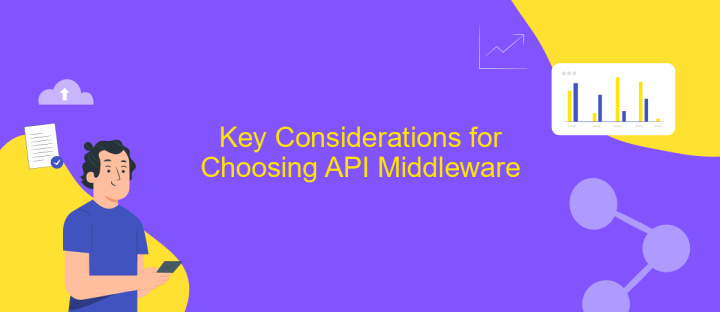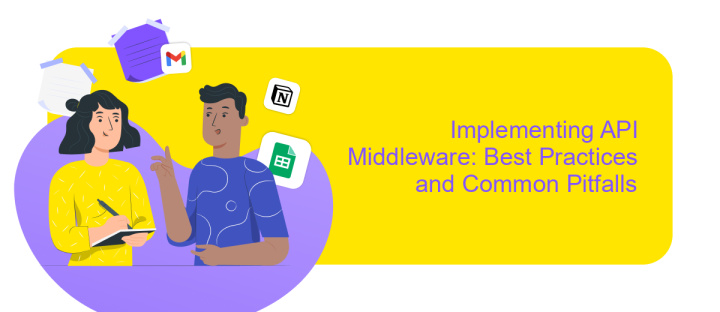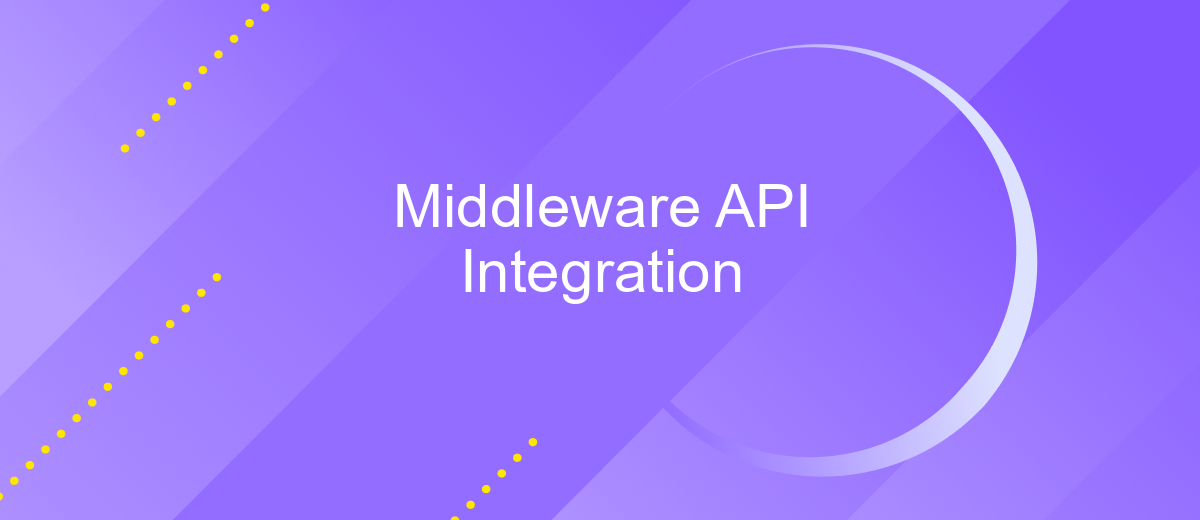Middleware API Integration
Middleware API integration serves as a crucial bridge in modern software architecture, enabling seamless communication between disparate systems and applications. By acting as an intermediary layer, middleware APIs facilitate data exchange, enhance interoperability, and streamline processes, ultimately boosting efficiency and reducing complexity. This article explores the pivotal role of middleware in API integration, highlighting its benefits, challenges, and best practices for successful implementation in diverse technological environments.
Introduction to API Middleware and its Benefits
API middleware serves as a crucial intermediary layer that facilitates seamless communication between different software applications. By acting as a bridge, it enables disparate systems to interact efficiently, ensuring data is transferred smoothly and securely. Middleware abstracts the complexities of underlying systems, allowing developers to focus on building core functionalities without worrying about integration challenges.
- Streamlined communication between diverse applications.
- Enhanced security through centralized authentication and authorization.
- Improved scalability by managing data traffic efficiently.
- Reduced development time with reusable integration components.
- Increased system reliability through consistent error handling.
Utilizing API middleware offers numerous advantages, making it an indispensable component in modern software architecture. It not only simplifies the integration process but also enhances the overall performance and security of interconnected systems. By leveraging middleware, businesses can achieve greater agility and adaptability, enabling them to respond swiftly to evolving technological demands and market conditions. Ultimately, API middleware empowers organizations to unlock the full potential of their digital ecosystems.
Types of API Middleware and their Use Cases

API middleware serves as an intermediary layer that facilitates communication between different software applications. There are several types of API middleware, each designed to address specific integration needs. Data integration middleware focuses on connecting disparate data sources, enabling seamless data exchange and synchronization. This is particularly useful for businesses that need to aggregate data from multiple databases or applications. Another type, message-oriented middleware, allows asynchronous communication by sending messages between distributed systems, which is ideal for real-time processing and event-driven architectures.
In addition, API gateways act as a single entry point for managing, securing, and scaling API requests, providing a centralized platform for monitoring and control. For instance, ApiX-Drive offers a user-friendly interface to streamline API connections without the need for extensive coding, making it suitable for businesses looking to automate workflows efficiently. By leveraging such middleware solutions, organizations can enhance their integration capabilities, reduce development time, and improve overall system performance, ensuring that different applications work together harmoniously to meet business objectives.
Key Considerations for Choosing API Middleware

When selecting API middleware, it's crucial to evaluate several factors to ensure seamless integration and optimal performance. Middleware acts as a bridge between different software applications, facilitating communication and data exchange. Therefore, understanding your specific requirements and the capabilities of potential middleware solutions is essential.
- Compatibility: Ensure the middleware supports the protocols and technologies used by your existing systems.
- Scalability: Consider whether the middleware can handle increased loads as your business grows.
- Security: Evaluate the security features to protect sensitive data and comply with industry standards.
- Performance: Assess the middleware's ability to process data efficiently and with minimal latency.
- Support and Documentation: Check for comprehensive support and documentation to aid in troubleshooting and implementation.
Ultimately, the right API middleware should align with your organization's objectives, providing a robust and flexible solution that enhances your technological ecosystem. By carefully considering these key factors, you can make an informed decision that supports both current and future integration needs.
Implementing API Middleware: Best Practices and Common Pitfalls

Implementing API middleware involves creating a layer that facilitates communication between different software applications. This layer ensures seamless data exchange, enhancing system interoperability and scalability. To achieve this, developers must focus on designing middleware that is both efficient and adaptable to various API standards.
One of the best practices in API middleware implementation is to ensure robust error handling. This involves catching exceptions and providing meaningful error messages that can assist in quick troubleshooting. Additionally, maintaining comprehensive documentation is crucial for ensuring that future developers can easily understand and modify the middleware as needed.
- Ensure middleware is stateless to enhance scalability and maintainability.
- Implement security measures such as authentication and encryption to protect data.
- Use logging to monitor middleware performance and detect issues early.
- Optimize for performance by minimizing latency and reducing overhead.
Common pitfalls include neglecting security, which can lead to data breaches, and failing to adequately test middleware under different scenarios, which may result in unexpected failures. By adhering to best practices and being aware of these pitfalls, developers can create robust and efficient API middleware solutions.
- Automate the work of an online store or landing
- Empower through integration
- Don't spend money on programmers and integrators
- Save time by automating routine tasks
Future Trends and the Evolving Landscape of API Middleware
The landscape of API middleware is rapidly evolving, driven by the increasing demand for seamless connectivity and integration across diverse platforms. Future trends indicate a shift towards more intelligent and autonomous middleware solutions, leveraging advancements in artificial intelligence and machine learning to enhance data processing and decision-making capabilities. This evolution aims to simplify the integration process, reduce manual intervention, and ensure more robust security measures. As businesses continue to adopt cloud-native architectures and microservices, middleware solutions must adapt to support these dynamic environments efficiently.
Moreover, the rise of low-code and no-code platforms is democratizing access to integration tools, allowing non-technical users to configure and manage complex integrations effortlessly. Services like ApiX-Drive exemplify this trend by providing user-friendly interfaces and pre-built connectors, enabling businesses to streamline their operations without extensive technical expertise. As the API ecosystem expands, middleware solutions will increasingly focus on enhancing interoperability and scalability, ensuring that organizations can easily adapt to new technologies and market demands. This ongoing evolution will play a crucial role in shaping the future of digital transformation and innovation.
FAQ
What is Middleware API Integration?
Why is Middleware API Integration important?
How does Middleware API Integration work?
What are some common challenges in Middleware API Integration?
How can I simplify the process of Middleware API Integration?
Strive to take your business to the next level, achieve your goals faster and more efficiently? Apix-Drive is your reliable assistant for these tasks. An online service and application connector will help you automate key business processes and get rid of the routine. You and your employees will free up time for important core tasks. Try Apix-Drive features for free to see the effectiveness of the online connector for yourself.


